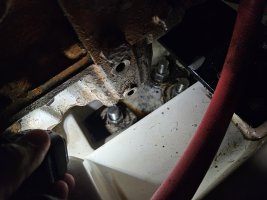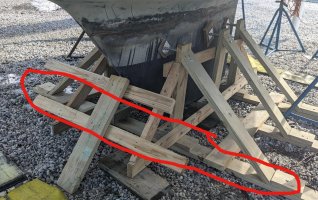I understand the concern, and it's something I was looking into locally here as well. Trying to get a full assessment of the costs before I get started.
I'm in San Carlos, Mexico, and I'm allowed to do as much as I want by myself, which is pretty refreshing. I talked to the office staff and the local workyard folks, and things are looking promising:
- They pulled another boat's keel earlier this year, they built an entire keel-support cage for that job, and it's still here. I can use it, although the daily rental rate is still TBD. I'm estimating $30/day.
- Lift rate within the storage yard is about $45/hour.
- Dis-masting is about $130/hour.
If I use my own tools, and sweat my own sweat (it's hot here), then optimistically I'm looking at $260 for getting the mast off and back on. Then another $120 - $200 for getting the boat off and back onto the keel. If it works out to double these numbers, that's still a good deal. Once the keel and boat are separated, I can sit in stands while I grind, sand, and prep the mating surfaces. No additional costs there.
I plan to do a lot of prep work to make that optimistic estimate realistic, I don't want to have the boat in the hoist and then say "oh, I should probably grind down that keel-stub joint" while I'm paying hourly machinery costs.
I think some of the worst-case scenarios are in a way my best-case scenarios. If I pull the keel off and the bolts look terrible, then I'll be very glad I did it now. I'd rather not find out about these issues when I'm halfway to the Tuamotus.
The work yard is basically empty right now, this is low season here. Fortune appears to be on my side - so, fingers crossed, this project goes well. I will document everything to the best of my ability, for future owners considering the job.



